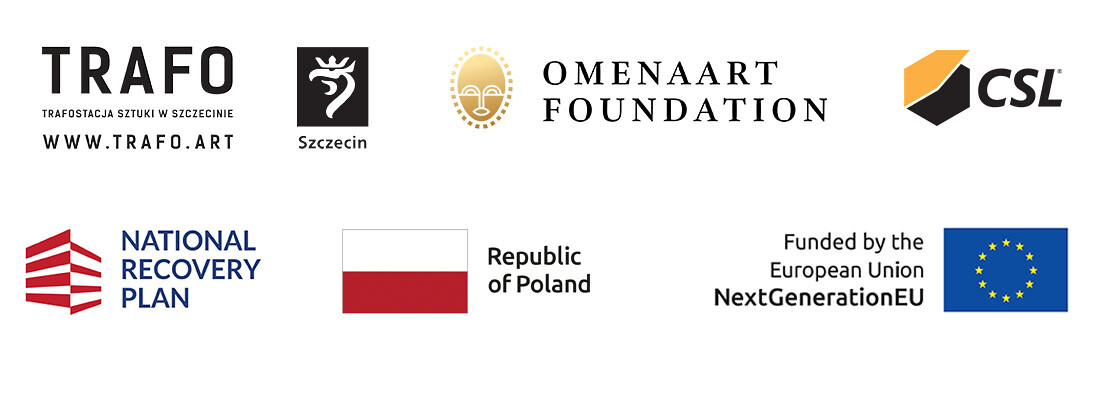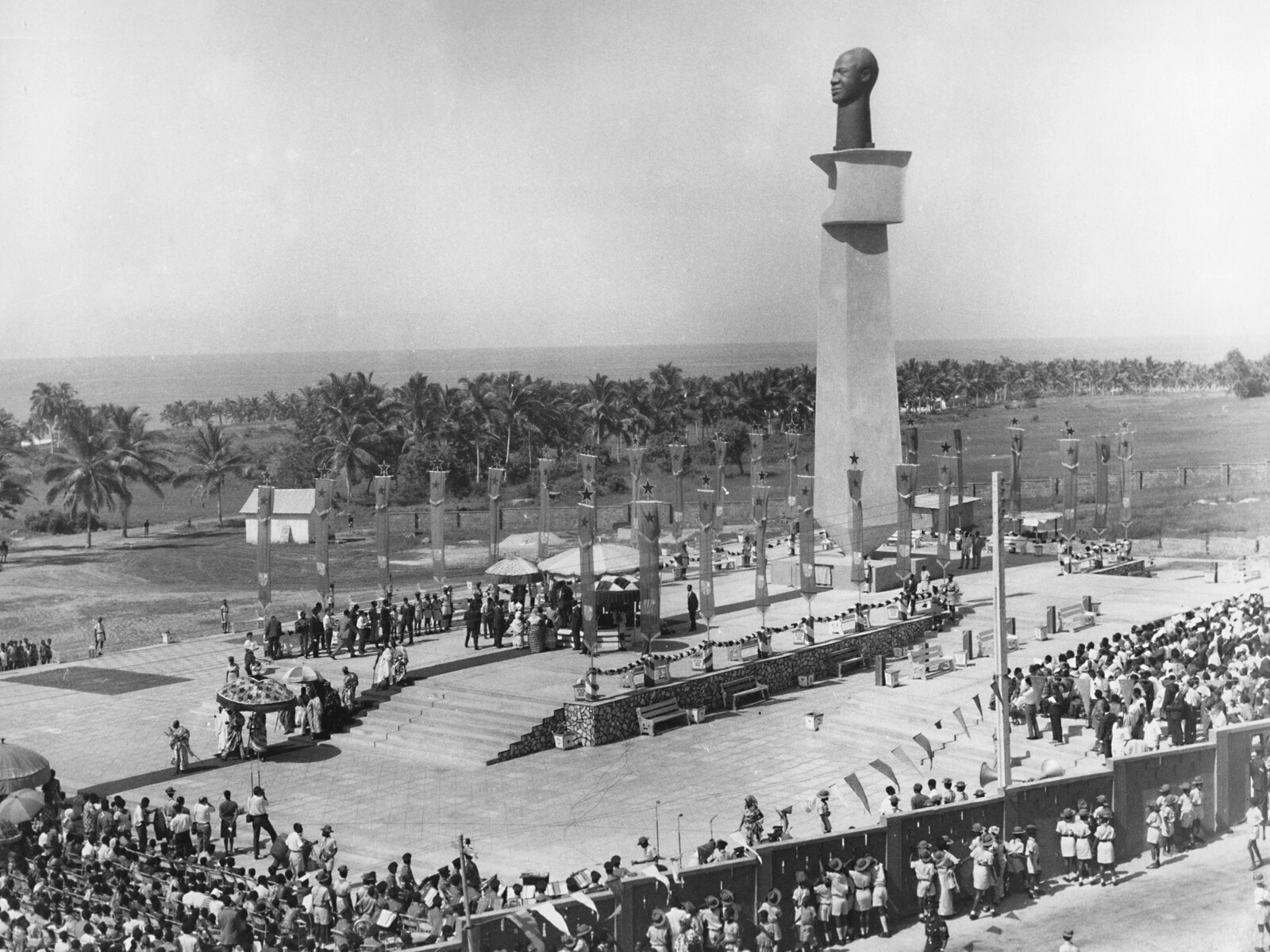One Man Does Not Rule a Nation
September 19, 2024–January 5, 2025
Świętego Ducha 4
70-205 Szczecin
Poland
Hours: Tuesday–Sunday 11am–8pm,
Friday–Saturday 11am–9pm
T +48 91 400 00 49
mail@trafo.art
The geometric shapes of kente cloth from the West Coast of Africa have for centuries represented a code of culturally understandable aphorisms and commemorated important events. The zigzag arrangement of symbols in gold, red and blue was originally designed to honor the marriage of the first president of Ghana, Kwame Nkrumah to his Egyptian bride Fathia Rizk. In 1966, Nkrumah was ousted from power by a military coup, and the design was renamed Obaakofo mmu man—One man does not rule a nation. As contemporary Ghanaian artists, intellectuals and politicians are increasingly returning to Nkrumah’s ideology and recognizing his vision of Pan-Africanism, anti-colonialism and social equality, the fabric is gaining a new meaning.
“Forward ever, backward never” was the official slogan of the leader’s party. However, in order to move forward, it is necessary to revisit history and local heritage, frequently repressed from official narratives. The close collaboration between Poland and Ghana in the first half of the 1960s is one of such episodes. The strongest visual symbol of the above relations, practically erased in both countries, is the Sword Monument—a statue in the shape of a sword topped with Nkrumah’s head, designed by Alina Ślesińska. Similarly to the kente pattern, various meanings have been assigned to it throughout the course of history.
The artist worked on the monument for a year and a half—originally in the capital of Ghana, Accra, and later in the nearby Winneba, where the piece was unveiled in May 1965. The monument was overthrown and destroyed a few months later during the military coup. The shape of the statue originally referred to the traditions of the local Efutu and Ashanti peoples, as well as to the leader’s role as a “sword against colonialism” and European imperialism. The obelisk was placed in front of the Kwame Nkrumah Ideological Institute where national elites were educated, alongside fighters and guerrillas from African countries actively struggling for independence. Specialists from the socialist camp and leftist scholars from the West lectured there. The unveiling ceremony of the monument took place during the international conference of the Afro-Asian People’s Solidarity Organisation, the first to be attended by a delegation from the Polish committee of this global alliance.
Alina Ślesińska gained recognition during the post-Stalin thaw of the 1950s, when her sculptures and innovative “proposals for architecture” were presented in Warsaw, Paris, London and Washington. Following the artist’s return from Ghana and her retrospective show at the Zachęta—National Gallery of Art in Warsaw, Ślesińska’s star began to fade to eventually fall into oblivion after 1970.
The installation features both archival exhibits and new materials recorded by Max Cegielski and Janek Simon. The show is not only a reconstruction of the relations between the Polish People’s Republic and the decolonizing Africa. It recalls the visionary artist and provides a geopolitical and economic context for the Sword Monument. Just like kente, the statue takes on new meanings and becomes a symbol of the era of Afro-optimism—the period of great expectations, both in the global South and in the North, associated with freedom and rapid development of Africa, but squandered as a result of neo-colonial policy. One man does not rule a nation looks to the past for a more equitable global cooperation in the future.
The installation at TRAFO Center for Contemporary Art in Szczecin is an expanded version of the exhibit commissioned by the Ljubljana Biennale and the Riga Survival Kit festival. The show broadens the original narrative with new discoveries and highlights the important role of Szczecin in the Polish relations with the liberating Africa of the late 1950s and early 1960s. It was the ships of the Szczecin-based Polish Steamship Company, and the then Uniafrica (now Euroafrica), that connected the two countries, while the Gryf company processed cocoa from Ghana into chocolate.
Coordinators: Anna Sienkiewicz-Rogaś, Marta Walaszek. The project was made possible thanks to financial support from OmenaArt Foundation and CSL Sp. z o.o. Co-funded from the National Recovery Plan of the European Union.



